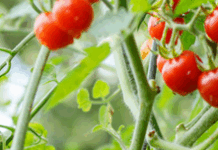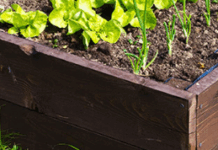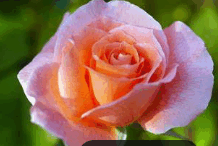https://hnr.k-state.edu/extension/info-center/newsletters/index.html
Blog Post: http://www.ksuhortnewsletter.org
Video of the Week: Cleaning Up Your Garden for the Fall
https://kansashealthyyards.org/all-videos/video/cleaning-up-your-garden-in-the-fall
UPCOMING EVENTS
Turf Conference
The 71st Annual Kansas Turf & Landscape Conference will be held in-person this year on December1 & 2 at the Hilton Garden Inn, Manhattan. The conference is an excellent way to learn about turf and landscape management, visit with old friends, network with new ones, and see all the latest products and supplies from local and national vendors.
The conference has been approved for commercial pesticide recertification hours:
1 Core hour
3A – 7 hours
3B – 7hours
GCSAA education points and International Society of Arboriculture CEUS will also be available by attending the conference.
You can register online at https://www.eventbrite.com/e/2021-kansas-turf-landscape-conference-registration-167328585303
Register before November 22 to receive a discounted rate
Kansas Orchid Society Fall Show and Sale, November 6, 2021
https://www.kansasorchidsociety.com/special-events
This Month’s K-State Garden Hour Webinar: Winter Interest in the Landscape
Wednesday, November 3; Noon – 1:00pm CST
Presented by: Lynn Loughary, Extension Agent in Wyandotte County
Join this free gardening webinar the first and third Wednesday of every month. Recordings are made available online, and a one-time registration is required participate in the live webinar series. To register, see upcoming webinars, and view previous webinars, visit: http://ksre-learn.com/KStateGardenHour
REMINDERS
1. Work fallen tree leaves into the garden every two weeks to increase organic matter.
2. Drain hoses and irrigation systems before winter.
3. Fertilize cool-season lawns if you haven’t done so yet.
4. Dig up and store tender bulbs such as cannas, callas and glads after the leaves are browned by frost.
VEGETABLES
Horseradish
Horseradish is ready to dig after a hard freeze kills the foliage (usually November or December). The large roots can be harvested while smaller, pencil sized roots can be cut in 6-8 inch long sections as ‘seed’ or ‘sets’ for next year’s crop which are then immediately re-planted. Another option is to leave the horseradish in the ground and dig as needed. If you choose the latter option, be sure to heavily mulch the area so that the ground doesn’t freeze.
To use horseradish, peel the large, fleshy roots and cut into sections. Use a blender or food processor to chop the roots along with a small amount of water and a couple of ice cubes. Vinegar or lemon juice is added to stop the process that produces the “bite” of horseradish.
Add immediately after blending for a mild flavor or wait up to 3 minutes to give the horseradish more kick. Use 2 to 3 tablespoons of vinegar or lemon juice per cup of horseradish sauce along with ½ teaspoon of salt for flavor.
Horseradish has an extremely strong odor and so you may wish to open the blender or food processor outdoors and to keep your face away from the container when opening. Store ground horseradish in a tightly sealed jar in a refrigerator until ready for use. (Ward Upham)
Soil Prep Now for Peas Next Spring
Peas can be planted earlier in the spring than just about any other vegetable crop because they can grow well at a soil temperature of 40 degrees. Though other crops such as lettuce, parsnips and spinach can sprout at lower temperatures (35 degrees), they don’t start growing well until the soil reaches about 45 degrees. However, soils are often too wet to work in the spring. Therefore, you may wish to prepare the soil now rather than next spring so that planting can take place as early as possible even if those spring soils are wet. Wait until soil temperatures reach 40 degrees next spring and sprinkle the seeds on the soil and push them in with your finger. Protection from rabbits and deer will probably be needed as they will be attracted to anything green coming up so early. (Ward Upham)
TURF
Knotweed Control
Knotweed thrives in compacted soils, so a thorough aeration is the first step in control. This weed will not compete in a healthy lawn. Chemically, there are two options. Knotweed is an annual that germinates in late February or early March, so a preemergence herbicide can be used in the late fall (about now). Pendimethalin (Scotts Halts), Surflan (Weed Impede), Barricade, Dimension and XL are labeled for knotweed. (Note: Pendimethalin, Barricade and Dimension can be used on all Kansas turfgrasses, while Surflan and XL can only be used on tall fescue and warm-season grasses such as buffalograss, zoysiagrass and bermuda).
The other option is to use a combination postemergence product such as Trimec, Weed-Out, Weed-B-Gon or Weed Free Zone after the knotweed has emerged in the spring but is still young.
If spring seeding of the lawn is planned, your options are more limited. Trimec and other combination postemergence herbicides require a month before overseeding to thicken up your lawn. Obviously, don’t use a preemergence herbicide if you are trying to get new seed established. For homeowners seeding in the spring, tilling will control knotweed adequately without using a herbicide. If seeding without tilling (e.g., overseeding using a slicer-seeder), then use a combination product such as one mentioned above just after the knotweed comes up in the spring, and be sure to wait at least a month before seeding. (Ward Upham)
MISCELLANEOUS
Keep Compost Pile Moist
This is the time of year when there are lots of materials available to compost. Remember that the compost needs to be kept moist so that the bacteria and fungi can break down the raw materials. If you haven’t received rain recently, you may need to wet down the pile. Use a sprinkler to soak through the pile to the center. Allow the pile to drain. The goal is for the pile to remain moist; not waterlogged. Edges will dry out the quickest and may need a light sprinkling from time to time.
If you are interested in composting but don’t know how it is done, see our video at
http://tinyurl.com/jn6yppo.
We also have a series of publications on composting that can be accessed at http://hnr.k-state.edu/extension/publications/horticulture-practices.html (Ward Upham)
Garden Hoes
There are a number of different designs for garden hoes. My favorite three are the traditional, circular and scuffle. The traditional hoe is used to chop weeds or to lightly scrape the soil surface to kill weeds that are just emerging. Even though it is the most popular garden hoe, it is the one I use the least.
The scuffle hoe is the most used hoe I own. It covers a lot of ground quickly and kills weeds without disturbing the soil as much as other hoes. Because little new soil is exposed, it is less likely to bring up weed seed that will then germinate. This type of hoe can be more difficult to find than the traditional hoe and a mail-order company may be needed if your local garden center doesn’t handle them. There is a company in Kansas that makes these hoes in several different widths as well as a number of other hoe types. All are made out of recycled disc blades. That company is Prohoe Manufacturing, LLC (https://www.prohoe.com/ ) out of Munden, Kansas.
The circular hoe is more specialized. It features a circular “blade” in which only the bottom is sharpened. This allows you to hoe very close to existing plants without harming them as the sides of the circle are dull. This one was invented by an Oregon Extension Master Gardener in the late nineties. Though short-handled ones are relatively easy to find, the long-handled types are more difficult. As a matter of fact, the only source I could find was from Red Pig Tools. See https://www.redpigtools.com/Circular-Hoe-Long-Handle_p_1405.html .
Though these three types are my favorite, don’t be afraid to try other types to see how they work for you. (Ward Upham)
Begin Rabbit Protection Now
Rabbits may begin to nibble on newly planted trees and shrubs through the winter. Protect your investment with at least 2-foot-tall cylinders of 1-inch-mesh, chicken wire, or similar barrier. Remove the barrier in the spring or it can be left in place for a time. Just remember to remove it before it starts to constrict the trunk.
Other control methods include plastic tree wraps and liquid rabbit repellents sprayed on the plants. Repellents will need to be reapplied each time it rains. (Ward Upham)
Contributors: Ward Upham, Extension Associate
Department of Horticulture and Natural Resources
1712 Claflin, 2021 Throckmorton
Manhattan, KS 66506
(785) 532-6173
For questions or further information, contact: wupham@ksu.edu OR cdipman@ksu.edu
This newsletter is also available on the World Wide Web at:
http://hnr.k-state.edu/extension/info-center/newsletters/index.html
The web version includes color images that illustrate subjects discussed. To subscribe to this newsletter electronically, send an e-mail message to cdipman@ksu.edu or wupham@ksu.edu listing your e-mail address in the message.
Brand names appearing in this newsletter are for product identification purposes only. No endorsement is intended, nor is criticism implied of similar products not mentioned.
K-State Research and Extension is committed to making its services, activities and programs accessible to all participants. If you have special requirements due to a physical, vision or hearing disability, or a dietary restriction please contact Extension Horticulture at (785) 532-6173.
Kansas State University Agricultural Experiment Station and Cooperative Extension Service K-State Research and Extension is an equal opportunity employer. Issued in furtherance of Cooperative Extension Work, Acts of May 8 and June 30, 1914, as amended. Kansas State University, County Extension Councils, and United States Department of Agriculture Cooperating, Ernie Minton, Dean.





